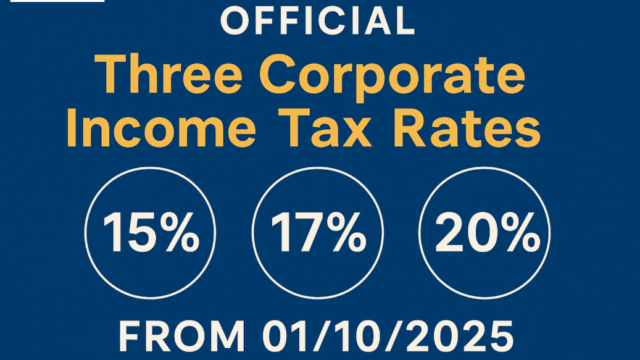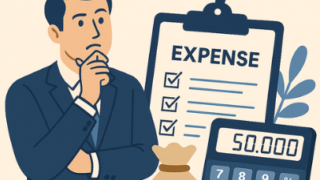Learning about tax chapter codes and sub-category codes helps businesses declare correctly and avoid errors. Learning about tax chapter codes and sub-category codes helps businesses declare correctly and avoid errors.
What Are Tax Chapter Codes and Sub-item Codes?
In Vietnam’s tax administration system, “tax chapter codes” and “sub-item codes” play an important role in classifying, identifying, and accounting for state budget revenues. These codes are used to accurately identify taxpayers and the specific types of taxes they are obligated to pay. Understanding and correctly applying these codes not only helps businesses file taxes accurately but also prevents administrative penalties due to errors. This article will help you clearly understand the nature, function, and application of tax chapter and sub-item codes in practice.

What Is a Tax Chapter Code? Meaning and How to Identify It
1. Definition of Tax Chapter Code According to the Ministry of Finance
A tax chapter code is a numerical code used to identify the organization or entity paying into the state budget, reflecting its role in the government structure or the economy. According to Circular 324/2016/TT-BTC issued by the Ministry of Finance, the tax chapter code consists of four digits and is separately assigned to each administrative, public service, business, or financial unit.
2. Common Tax Chapter Codes for Businesses
Businesses and individuals are typically assigned chapter codes based on the following groups:
-Chapter 754: Mixed economy outside the state sector.
–Chapter 755: Private enterprises.
–Chapter 756: Cooperatives.
–Chapter 757: Households (household businesses) and individuals.
Depending on the type of business and its governing agency, the chapter code will be categorized accordingly to determine accurate budget obligations.

What Is a Sub-item Code? How to Distinguish and Apply It
1. Definition of Sub-item Code in Vietnam’s Tax System
A sub-item code specifies the economic content of a particular revenue or expenditure item in the state budget. It indicates the exact source of revenue (such as corporate income tax, VAT, fees, and charges) or the purpose of a budget expense. Each sub-item code consists of four digits and is listed within the national budget index system.
2. Key Sub-item Codes to Know
Some commonly used sub-item codes include:
-Sub-item 1701: Value Added Tax (VAT).
–Sub-item 1001: Personal Income Tax (PIT).
–Sub-item 1052: Corporate Income Tax (CIT).
–Sub-item 2862: Business license tax – Tier 1.
–Sub-item 2863: Business license tax – Tier 2.
–Sub-item 2864: Business license tax – Tier 3.
Businesses need to identify the appropriate sub-item code that corresponds to their tax obligation for accurate accounting.

Guidelines for Declaring Tax by Chapter and Sub-item Code
1. How to Fill in Chapter and Sub-item Codes on Tax Forms
On tax declaration forms (e.g., VAT, CIT forms), information on chapter and sub-item codes is clearly specified. Taxpayers must reference the assigned codes and select the appropriate sub-item corresponding to the type of tax incurred.
Examples:
-VAT payment: enter Chapter 754, Sub-item 1701.
-CIT payment: enter Chapter 754, Sub-item 1052.
-PIT payment on salaries and wages: enter Chapter 757, Sub-item 1001.
2. Common Mistakes and How to Handle Them
-Entering the wrong chapter code, resulting in misidentification of the taxpayer.
-Selecting the wrong sub-item code, leading to an incorrect tax payment.
-Leaving the code fields blank or incomplete.
Solutions:
-Review the guidelines from the General Department of Taxation.
-Look up the latest list of chapter and sub-item codes.
-Submit an official letter to amend the declaration if a mistake has already been made.
3. How to Look Up Chapter and Sub-item Codes Online
Currently, businesses can look up tax codes through:
-The General Department of Taxation’s website: https://tracuunnt.gdt.gov.vn
-The eTax electronic tax declaration system.
-The hotline of the local tax office.
Understanding and correctly using tax chapter and sub-item codes is a mandatory requirement in business accounting and financial management. It ensures compliance with tax regulations, avoids administrative penalties, and promotes transparency in financial reporting. With the detailed and updated information provided in this article, businesses can feel more confident when filing and paying their taxes.
For any inquiries, contact Wacontre Accounting Services via Hotline: (028) 3820 1213 or email info@wacontre.com for prompt assistance. With a team of experienced professionals, Wacontre is committed to providing dedicated and efficient service. (For Japanese clients, please contact Hotline: (050) 5534 5505).








